The upma recipe I share here is adapted from my mom’s recipe and continues to be a favorite in my home. The ingredients used to flavor the rava upma (also called suji ka upma) give it a deliciously satisfying taste that will make this dish one of your new preferred go-to breakfasts.
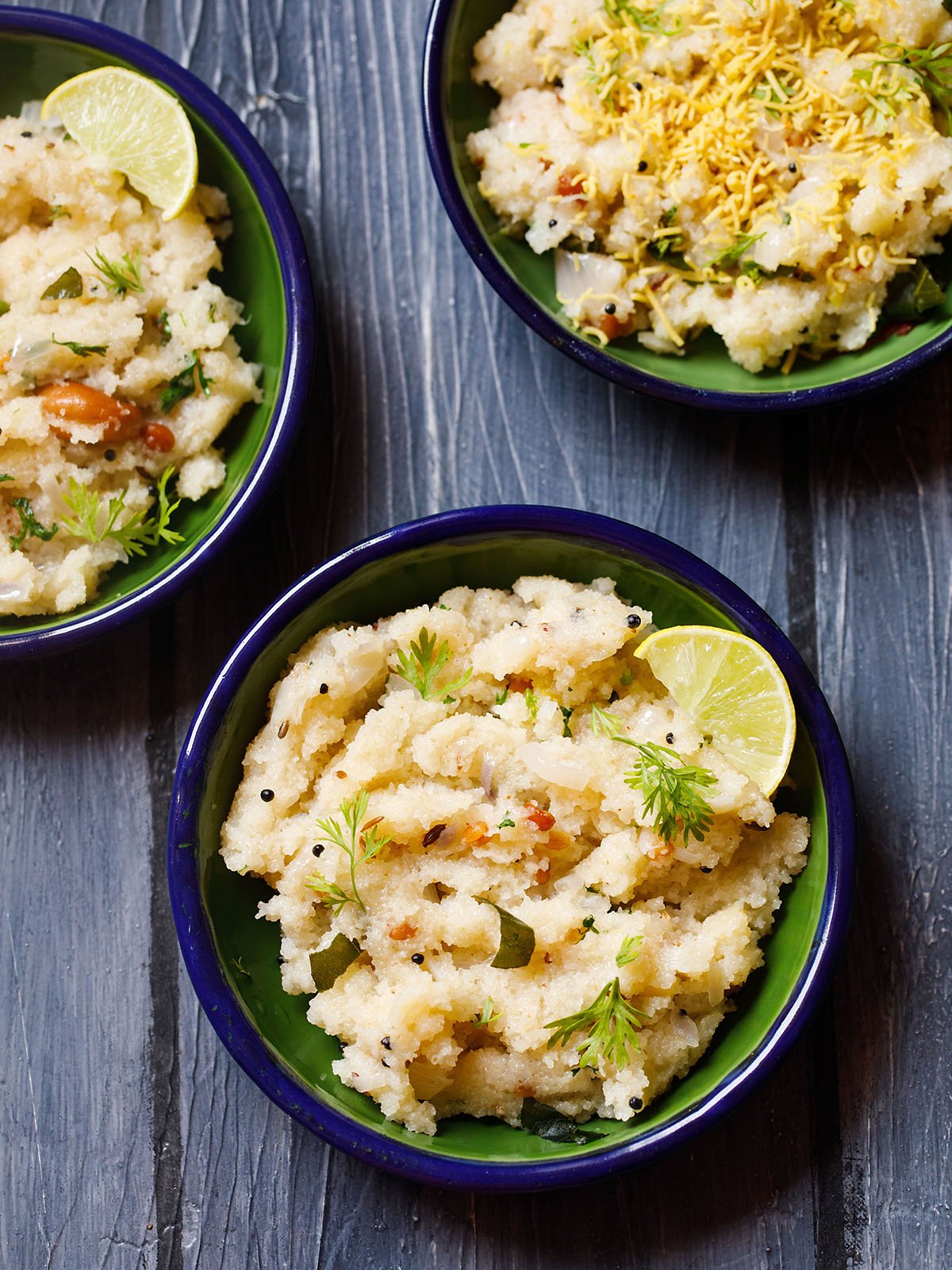
What is Upma
Upma is a flavorful South Indian breakfast dish made from rava or cream of wheat.
This traditional dish involves cooking roasted rava in water that has been flavored by ghee (or oil), cashews, urad dal (lentils), chana dal (husked chickpeas), onion, ginger and additional herbs and spices. Sugar can be added for a mildly sweet and savory dish.
This steaming hot breakfast dish can be made vegan by using oil instead of ghee. Full of warmth, flavor and deliciousness, this upma tastes so good. So why not take a break from that boring oatmeal and try something new? You can’t lose!
The main ingredient in any upma recipe is rava. Also called ‘suji’ or ‘sooji‘ in Hindi and ‘cream of wheat’ or ‘semolina’ in English, it is simply granulated wheat. Thus this breakfast food is known as Suji ka Upma in North India.
What really makes an upma recipe special are all the fried ingredients that are used for tempering. These ingredients can vary depending on the recipe, but usually include some sweet, savory and nutty flavors.
Upma is a traditional breakfast served in restaurants throughout South India, including Maharashtra. It is also a common breakfast prepared in South Indian homes. In fact, upma was a regular breakfast or evening snack in my house while growing up.
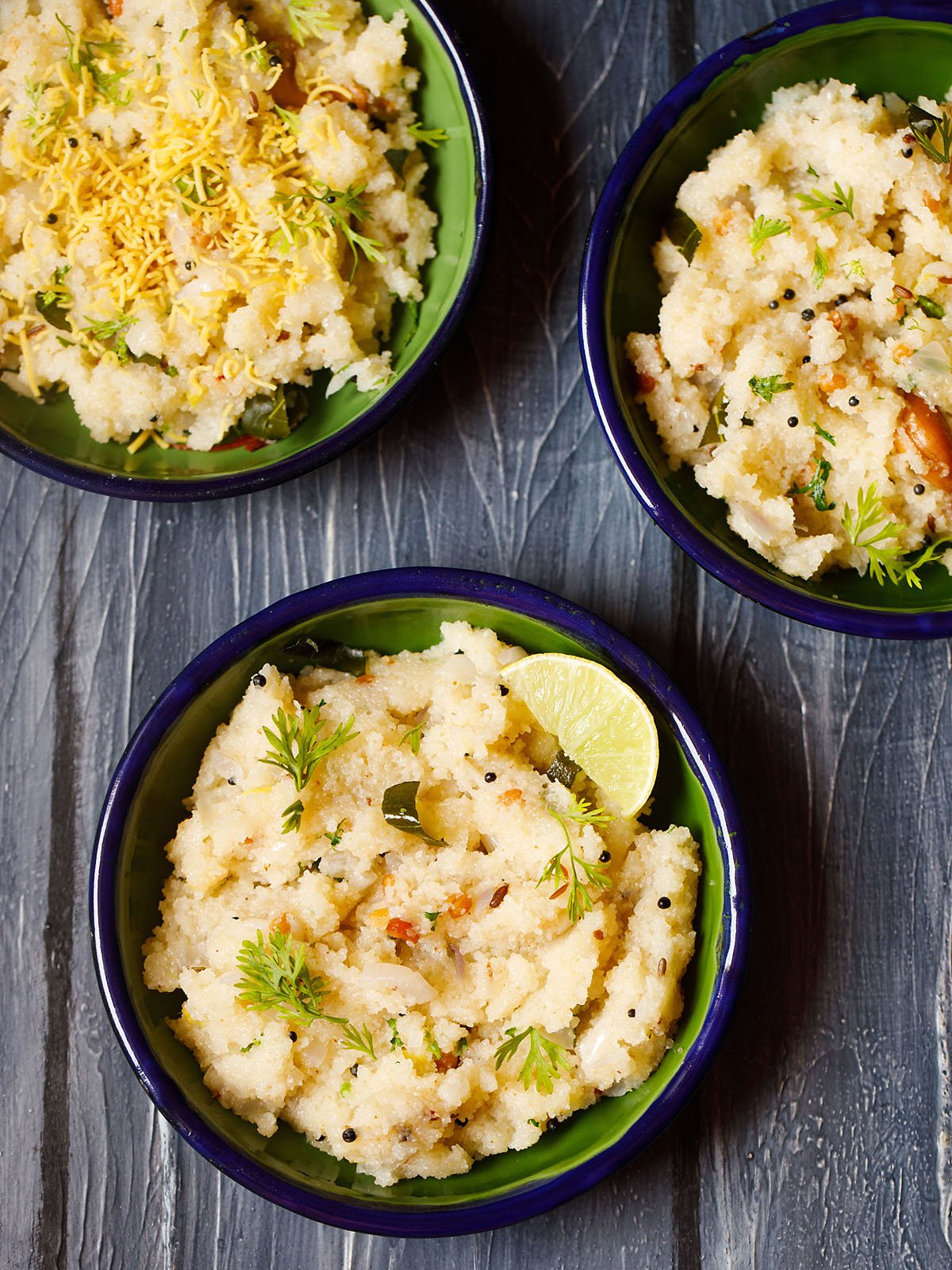
Prep Tip to Make Upma Recipe Quicker
This warm, homemade breakfast can be made relatively quickly, especially with this one easy tip. In the step-by-step photo guide below, you will see the first few steps of roasting the rava (cream of wheat).
This can easily be done ahead of time and I actually recommend roasting your rava and keeping it in an air-tight container right after purchase. This will help it stay good longer and prevent it from becoming moldy or spoiled.
Having your rava already roasted means this hot breakfast of upma recipe can be prepared in only 15 to 20 minutes. Roasted rava can also be used in a variety of other recipes, including Rava Cheela and Rava Pongal.
How to make Upma Recipe
Prep and Roast Rava
1. Prep the ingredients first to make upma recipe. Take 1 cup rava (fine variety) and set it aside. Next gather the aromatics, lentils, nuts, spices and herbs ready. You will need:
- ⅓ cup finely chopped onions
- 1 teaspoon chopped green chillies
- 1 teaspoon finely chopped ginger
- 2 tablespoons coriander leaves (cilantro)
- 8 to 10 curry leaves
- 10 to 12 cashews
- 1 teaspoon chana dal (hulled and split bengal gram)
- 1 teaspoon urad dal (hulled and split black gram)
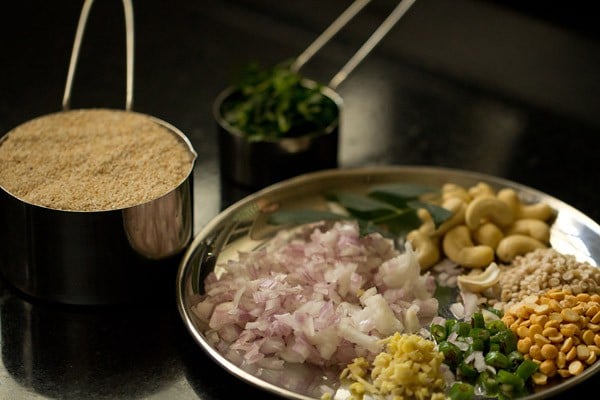
2. Heat a pan or kadai first. Add 1 cup rava or cream of wheat (fine variety).
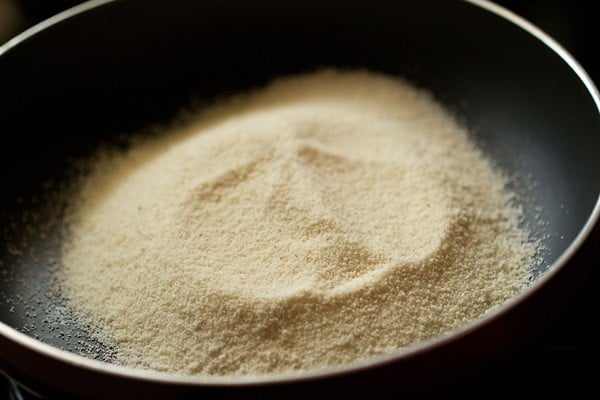
3. Begin to roast the rava. Stir often while roasting the rava.
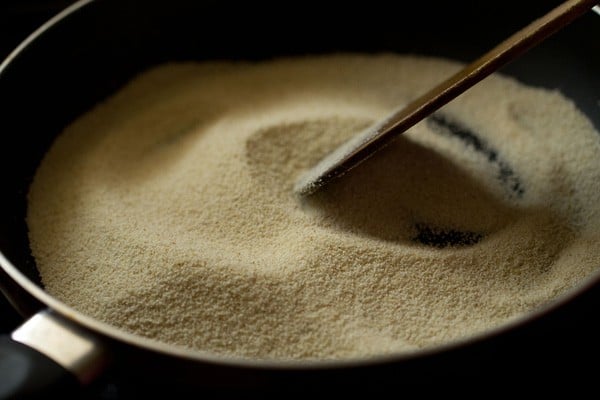
4. The rava or sooji grains should become fragrant and start to look dry, separate and crisp. Don’t brown the rava.
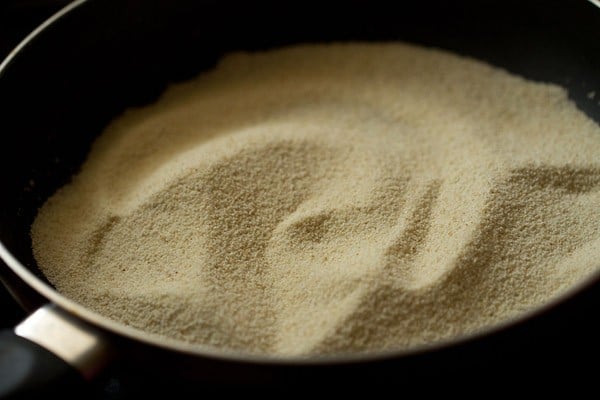
5. Once the rava becomes fragrant and starts to look dry and crisp, switch off the flame and put the roasted rava on a plate and set aside.
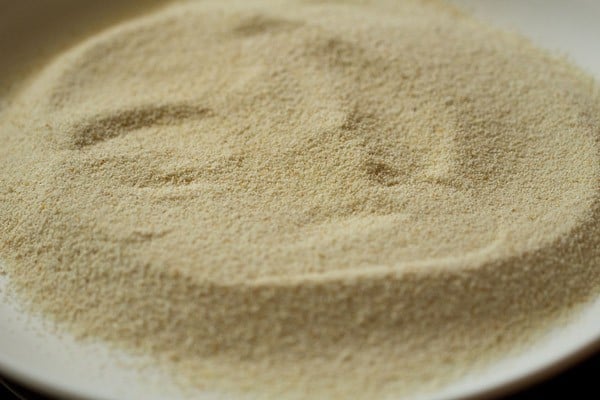
Fry and Sauté
6. In a pan, heat 2 tablespoons ghee (clarified butter) or oil. You could use sunflower oil or peanut oil or safflower oil or any neutral tasting oil.
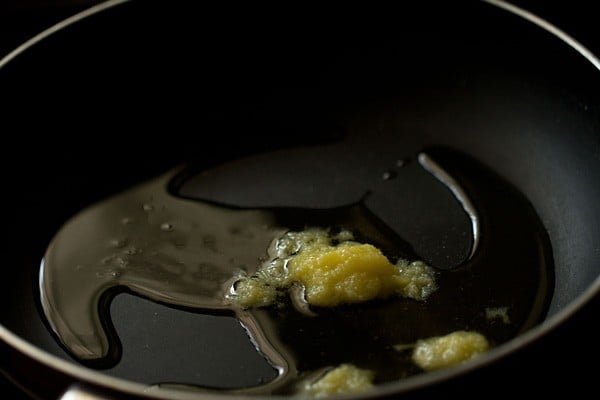
7. Lower the heat. Add 1 teaspoon mustard seeds. When you hear the crackling sound of mustard seeds, it means they are getting fried.
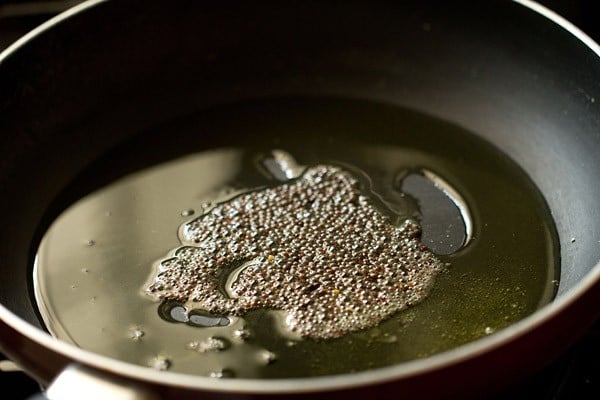
8. Now add the ½ teaspoon cumin seeds along with 1 teaspoon chana dal (husked and split bengal gram) and 1 teaspoon urad dal (husked and split black gram).
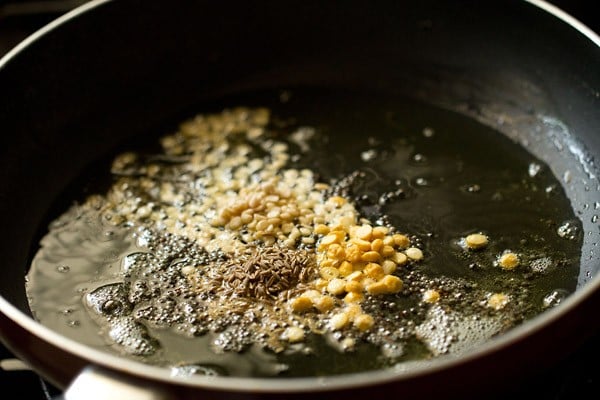
9. Stirring often fry until the chana dal and urad dal begin to brown a bit.
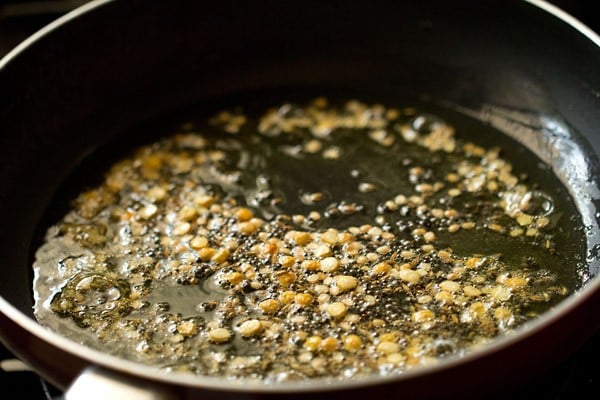
10. Immediately add 10 to 12 cashews and begin to fry on a low to medium-low heat.
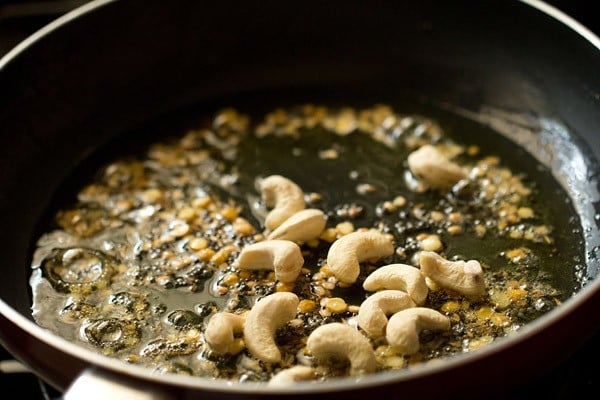
11. By the time the cashews get golden the dals should also be golden.
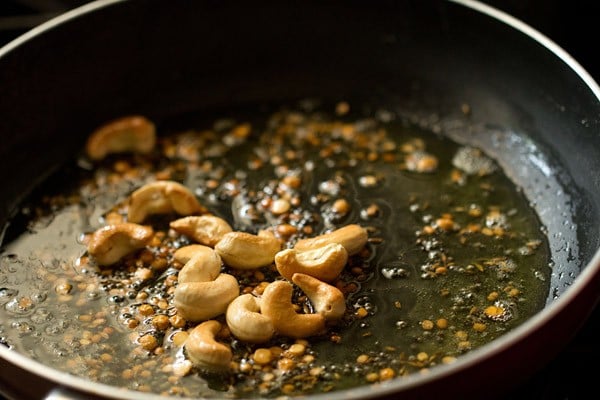
12. Now add the finely chopped onions.
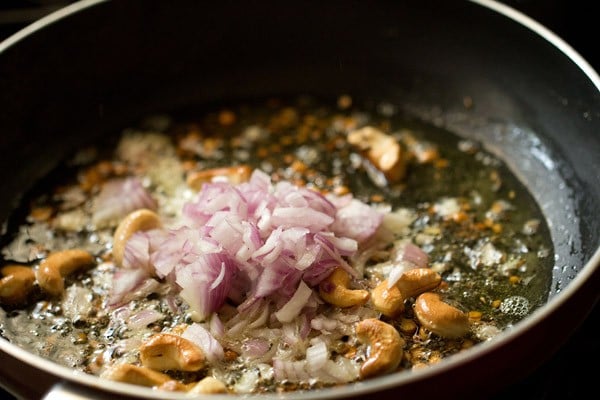
13. Sauté the onions until they soften and become translucent on a low to medium-low heat.
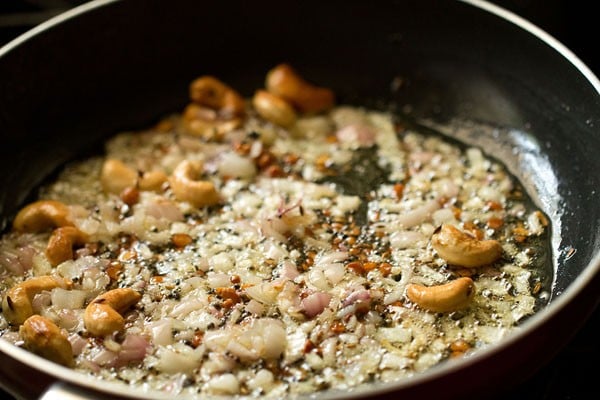
14. Then add the chopped green chillies, ginger and curry leaves. You can also add 1 dried red chilli at this step.
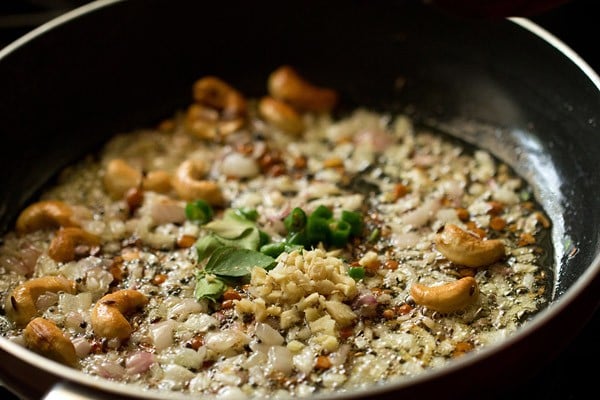
15. Mix well & sauté for a few seconds.
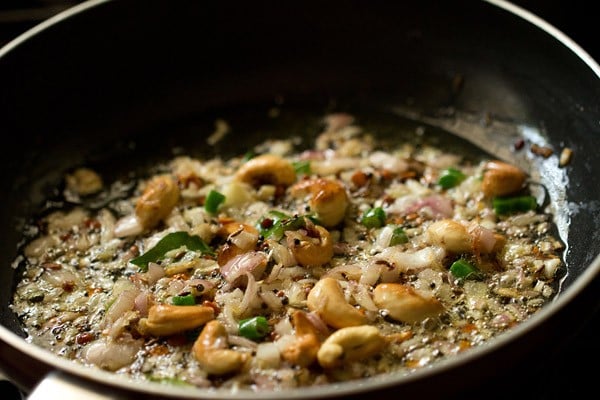
Boil Water
16. Then add 2.5 cups water to this mixture.
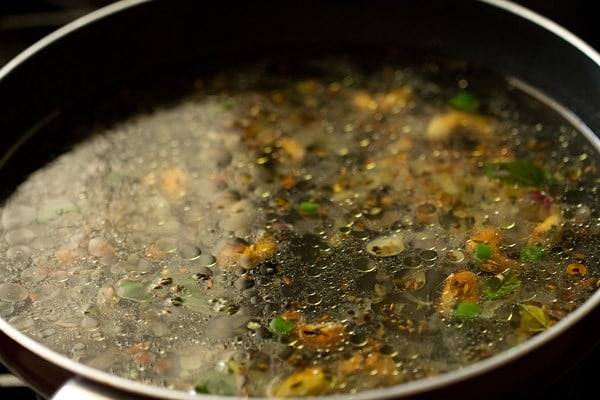
17. Add salt as required. Mix well and check the taste of water. It should be a bit salty but not too much.
In case if the salt becomes less in the dish, you can always sprinkle some salt from the top when eating.
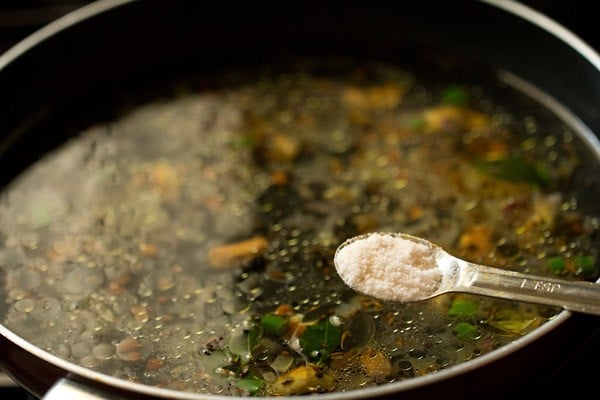
18. Then add 1 teaspoon sugar. Sugar is optional and you can skip it. We prefer a slight sweet taste in the upma and hence we add it.
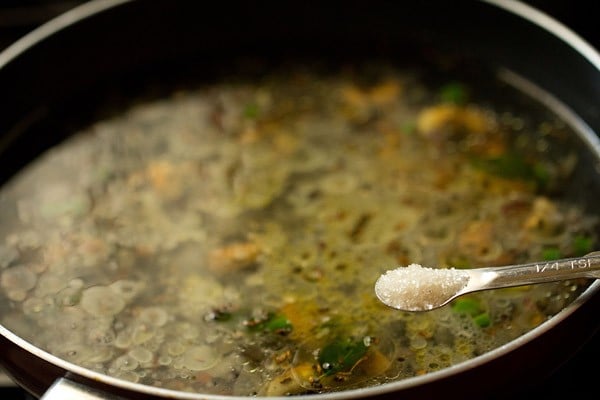
19. Stir again. On a medium to high flame, heat the water and let it come to a rolling boiling.
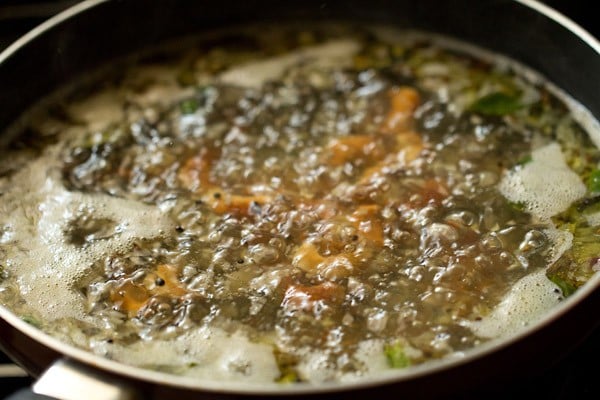
Make Rava Upma
20. When the water comes to a rolling boil, lower the flame to its lowest. Then add the rava in 4 to 5 batches with a spoon.
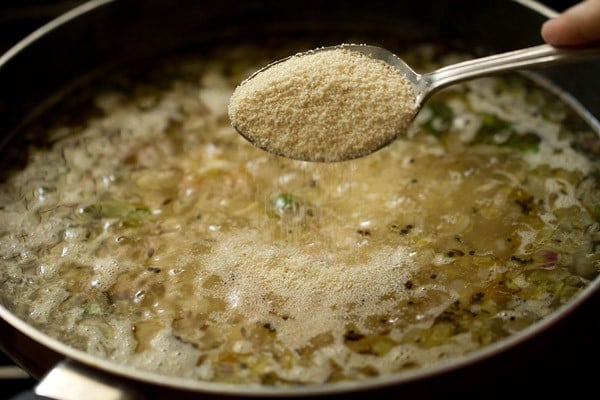
21. Once you add the first batch of rava, stir and mix immediately so that the roasted rava gets mixed evenly with the water.
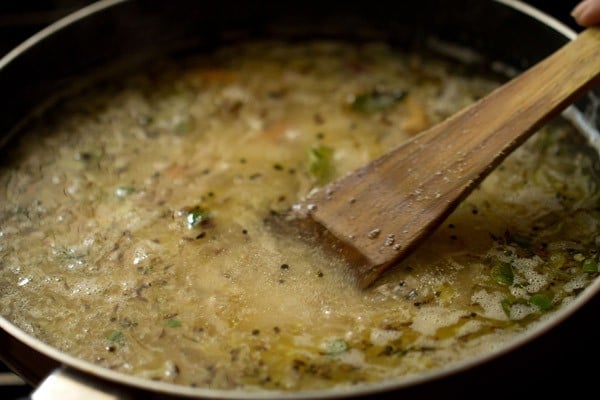
22. Then add the next batch of rava. Mix and stir again very well ensuring that the batch of rava is mixed evenly in water.
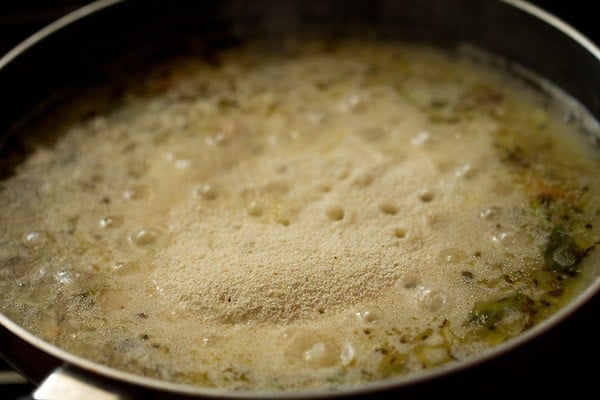
23. Continue to add and stir the rava up to the last batch.
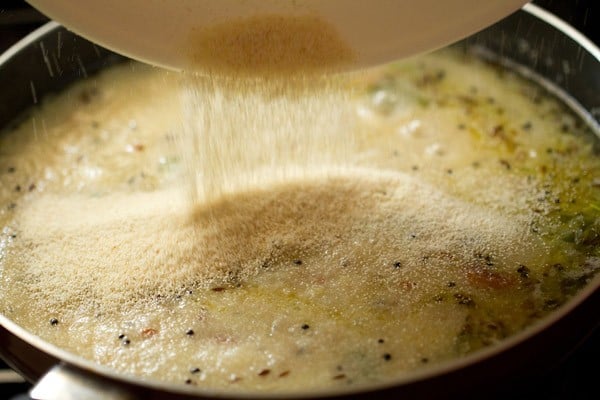
24. Quickly stir and mix very well. The rava grains will absorb water, swell and get cooked.
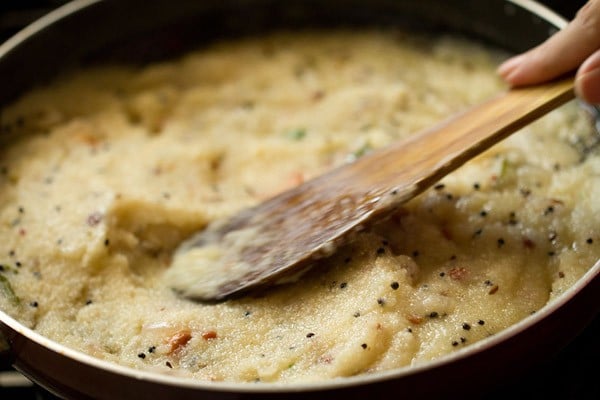
25. Cover and allow the rava upma to steam for 2 to 3 minutes on a low heat.
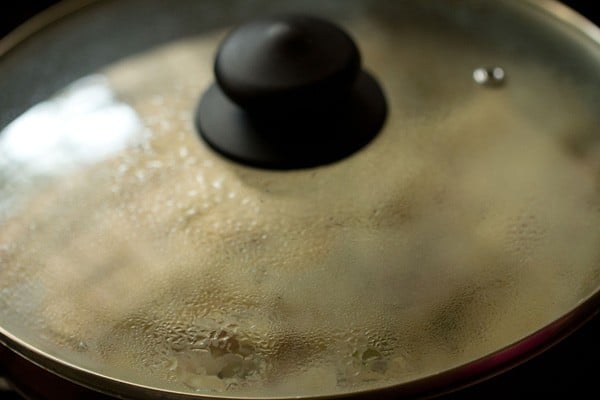
26. Then switch off the heat. In the below photo, the rava is cooked well and the suji ka upma is ready.
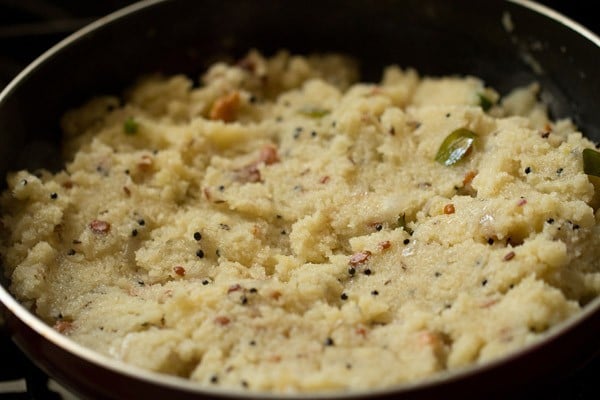
27. Lastly add about 2 tablespoons chopped coriander leaves (cilantro). You can add more coriander leaves if you like.
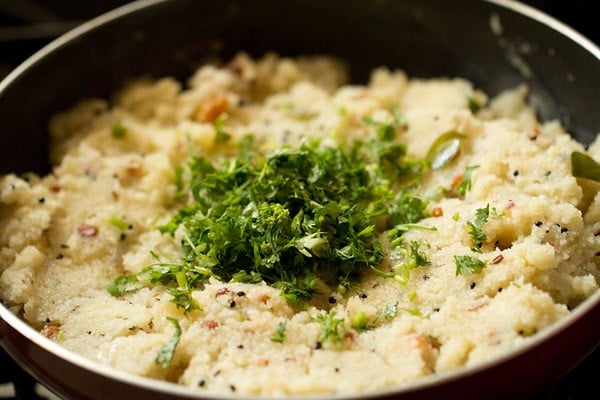
28. Mix again.
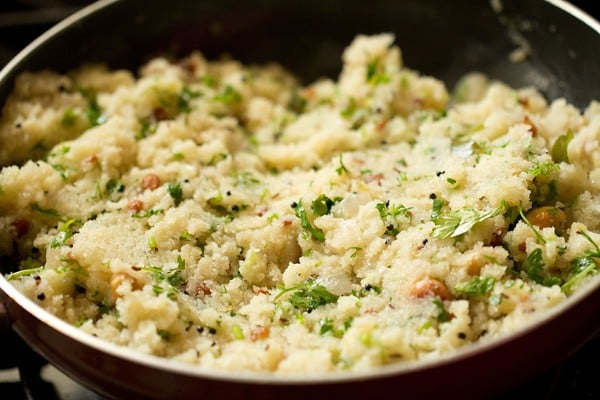
30. Serve upma hot or warm with slices of lemon or a side of lemon pickle or coconut chutney. You can opt to drizzle half to one teaspoon of ghee while serving. If you like you can garnish with some coriander leaves.
I also sprinkle some sev (fried gram flour vermicelli) on upma while serving. Though this is not the way upma is traditionally served, the folks at home prefer this Mumbai style. You can also serve it with idli podi.
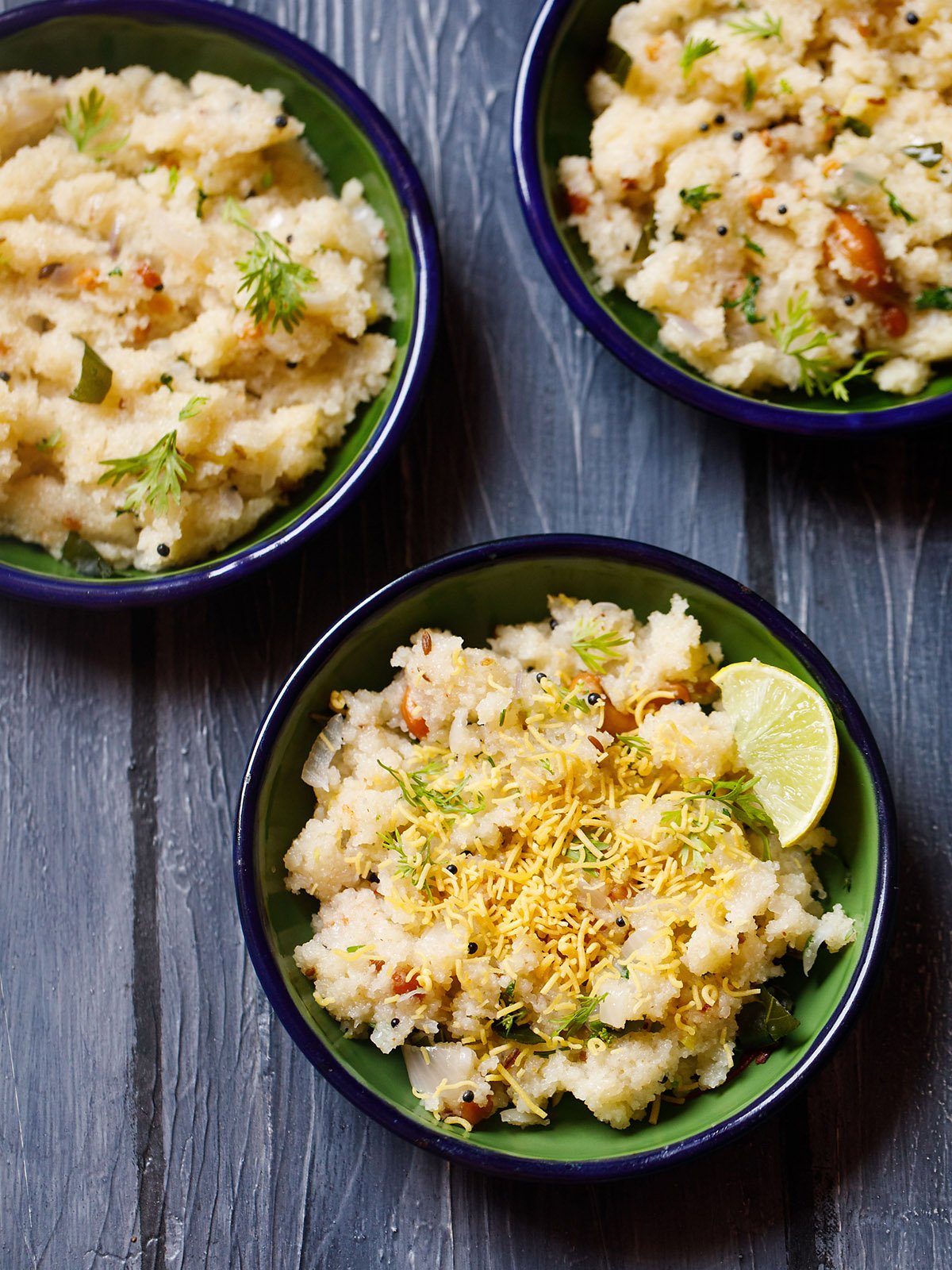
No comments:
Post a Comment